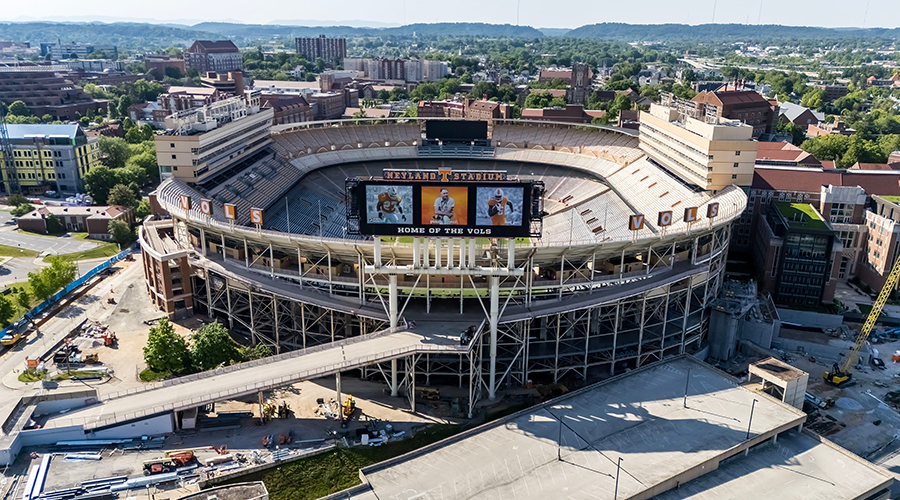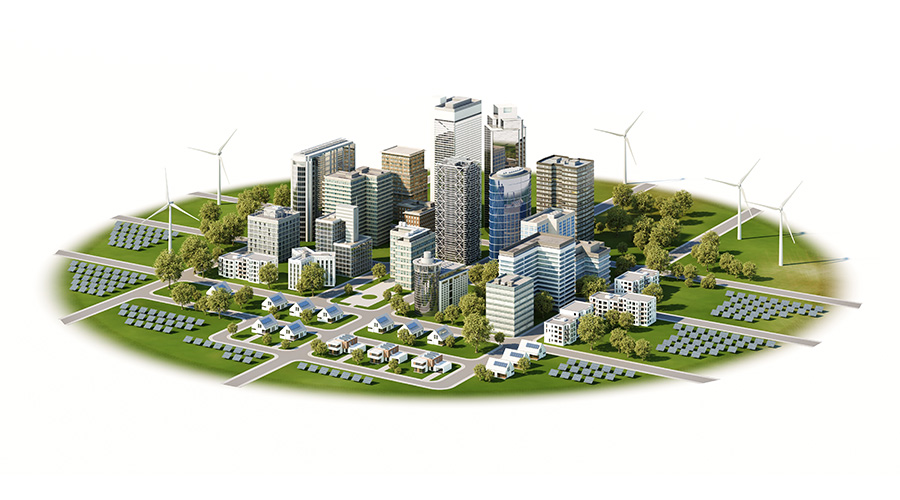Interior Design Can Affect Health and Productivity; Here's How to Get it Right
OTHER PARTS OF THIS ARTICLEPt. 1: This Page
It’s a safe bet that sustainable design is here to stay. As more in the industry understand this, they also are understanding that incorporating sustainable design strategies early in the process is an opportunity for improving operating efficiency and organizational performance. As integrated design gains momentum, a range of project goals have a higher rate of success and the old obstacles to sustainable design begin to dissolve.
In the integrated design process, interior design is just one part of a system. The interior designer plays an important role in recommending appropriate design strategies that affect productivity, health and well-being. Additionally, through specification and purchasing of verified sustainable products, designers can influence the market to move in a greener direction, directly improving human and ecological health. It is therefore crucial to select quality products and materials that live up to their sustainable claims.
Building owners and facility executives also play a role in the integrated design process. From the onset of the project, they should champion the sustainable design goals, especially those related to ongoing energy and water performance of the facility. Sustainable strategies related to the base building, such as recycling and composting, parking strategies that encourage carpooling, fuel efficient vehicles and biking to work are also ideal for the building owner or facility executive to bring to the table. After the project is complete, the owner or facility executive can educate the building occupants on maintaining and using the space’s green features.
For many years there has been a perception that sustainable products are a temporary trend and don’t perform as well as conventional products. What’s more, sustainable interior products are sometimes thought to be “crunchy,” with finishes that are natural but rough looking and earthy, like composite wheat board and hemp. Those are good materials, but they represent a specific aesthetic that is not the only option for sustainable products. The reality is that product manufacturers have responded well to market demands for products that meet sustainability requirements and deliver high performance and aesthetic quality and variety.
As recently as a few years ago, many claims were vague or revealed the manufacturer’s lack of knowledge of what a sustainable product is. Today many companies are more sophisticated in their metrics and reporting, as well as in using third-party certification.
Products with some sustainable characteristics are relatively easy to find and verify. For instance, products that use recycled content, such as wallboard, carpet tiles, floor tiles, and translucent resins are abundant in today’s market, usually not at a cost premium. It is also relatively easy to find products that emit low or zero levels of volatile organic compounds (VOCs), and products that are sourced locally.
To create truly environmentally, socially and economically sustainable interiors, it helps to understand what efforts make the most difference. The following seven principles can help guide the design process and ensure that sustainability is more than a superficial layer on an interiors project.
1. Keep the Big Picture in Mind
The U.S. Green Building Council’s LEED program has helped transform the building industry and made sustainability a part of everyday language. If using LEED, though, it’s important to keep the bigger picture in mind, and not use LEED as strictly a checklist. Whether seeking third-party certification or not, successful sustainable projects have a unique point of view in regards to sustainability. Engaging in an eco-charette or a visioning session helps stakeholders tailor the sustainability approach to the overall design goals for the project. This ensures strategies do not end up getting value engineered out of the project.
2. Go Back to Basics
As the building industry becomes more knowledgeable about sustainability, the dialogue deepens to include health and productivity benefits. Allowing access to daylight and views through thoughtful space planning and furniture design positively affects employees and also reduces energy use and greenhouse gas emissions. An office plan that incorporates interior glazing on perimeter offices, or locates offices towards the interior core of the building maximizes access to windows. Incorporating transparent glass into workstations or keeping panel heights below 42 inches allows a seated worker to benefit from the view outside without having to radically change furniture layouts.
3. Get Beneath the Surface
When human health is spoken about in sustainable terms, much of the conversation is about indoor air quality. Pollutant concentrations indoors are often worse than outdoors. For over a decade, the industry has been trying to reduce the VOC emissions of the products we use in the built environment. Today, there are an increasing amount of products with indoor air quality labels and certifications to use as product selection criteria, including Greenguard and Scientific Certification System’s Indoor Advantage for furniture, GreenLabel and FloorScore for flooring, and Green Seal for paints.
As indoor air quality regulations are becoming more strict, manufacturers of wood products, such as particle board and MDF products, are replacing urea formaldehyde, a known carcinogen, with alternative adhesives and binders. There are now more choices available for these products than even two years ago. But until they are phased out completely, it is essential to verify that specification language expressly addresses urea formaldehyde, especially in millwork and furniture items.
With indoor air quality, what’s usually measured is the emission of VOCs. Not always measured are semi-volatile compounds, like phthalates found in PVC plastics, halogenated flame retardants (HFRs) found in electronics, foams and textiles, and perfluorochemicals (PFCs) which are found in stain- or water-resistant fabrics and furniture.
These chemicals are being voluntarily phased out by some manufacturers as a result of pressure from the health care industry, but are still present in many building materials, and are the subject of heated debate in the industry. This can be difficult for specifiers who feel caught in the middle. Without deep knowledge of a material’s chemistry and manufacturing details, it’s hard to know for sure which design decisions are the best for human health. In these situations, instead of waiting for regulation to prove that a material is harmful, err on the side of caution, and look for materials that are known to be safer.
4. Be Frugal
Spending money where it counts is more important than ever. The mantra of “less is more” comes through when certain design strategies are put in place. An approach known as dematerialization — which includes such steps as treating structure as finish, rather than adding finish materials, and using furniture to create spatial boundaries instead of walls — uses fewer materials and allows for money to be spent elsewhere. Salvaged and reclaimed finishes and furniture can sometimes require more work than selecting items from a catalogue, but the end result may be better tailored to a particular space. Furniture dealers and companies who specialize in salvaged items have begun to make sourcing easier.
Some finishes may still have a cost premium, but can have less environmental benefit than simpler gestures. For example, a small amount of recycled content may mean material was diverted from landfill, but through manufacturing and shipping the carbon footprint may still be high. A thorough understanding of the life cycle of a material or product will guarantee the highest level of environmental responsibility.
Because interior design is material selection intensive, there is an assumption that design choices do little to impact the energy use of a space. But lighting choices can significantly reduce wattage without sacrificing aesthetics or performance. This has a tremendous impact on both the amount of energy used for lighting as well as cooling loads.
5. Double-tasking Strategies
To get the most value out of strategies that are chosen for an interiors project, look beyond single attributes and seek out products that have multiple benefits, such as ones that incorporate recycled content as well as provide indoor air quality benefits.
New product certifications and standards, like the Business and Institutional Furniture Manufacturer’s Association’s (BIFMA) furniture standard, McDonough Braungart Design Chemistry’s (MBDC) Cradle to Cradle certification, and the Institute for Market Transformation to Sustainability’s (MTS) SMART certification, include social responsibility and human health criteria, as well as environmental criteria. Robust forest management criteria, such as the Forest Stewardship Council’s and the Sustainable Forest Initiative’s, also consider fair practices for the chain of custody process from forest to consumer. Because deforestation accounts for over 25 percent of global emissions, sustainable forest management is not only a tree-hugger’s issue, but a climate change issue as well.
Finding synergies between strategies employed can help save money as well as meet sustainability goals. Daylight harvesting cuts down lighting wattage, and coupled with access to views can help productivity, offsetting the potential increase in cost to install the system. Light fixtures that combine daylight sensors into the fixture itself are now available to reduce labor costs.
6. Take It One Step at a Time
Facility executives should consider performance, cost, durability, appropriateness of use, as well as human and ecological health. This can be overwhelming, especially if manufacturers have not communicated the true environmental impact of their product. Don’t try to tackle everything at once. Start with the simple things first, then work up to more complex issues or attributes. Seemingly small actions may appear to be a drop in the bucket, but they do have an impact.
7. Look Beyond First Costs
With budgets tightening, it’s often hard to look beyond first costs in product selection. Value, rather than cost alone, should be the driver for decision-making. The costs involved with maintaining or replacing products throughout their life cycle vary from product type to product type. Because the future cannot be determined, space plans that are designed for ongoing reconfiguration and flexibility help ensure minimal amounts of the built-environment ends up in landfill.
The value of interiors in the integrated design process is not just to create beautiful and efficient spaces. Good design helps influence behaviors. Communicating how the interior spaces support human and ecological health sets up the first domino, and continues the transformation to sustainability, opening the door for greater participation by all those who occupy and visit the space. 
Melissa Mizell, IIDA, LEED AP, is a senior associate with Gensler, a global architecture and design firm, where she is a leader in sustainable design. An interior designer, Mizell joined Gensler in 1995 and has been a LEED AP since 2002. She has worked on projects ranging from commercial office space to universities to airports.
Related Topics:












